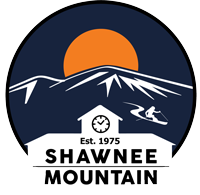Shawnee Mountain Ski Patrol
The Shawnee Mountain Ski Patrol is part of the National Ski Patrol System. As Patrollers they perform many safety-oriented functions as part of our operations, but are best known for responding to an injured guest that requires first aid and transportation off the mountain. A great deal of time is spent training in rescue, CPR, lift evacuation, first aid and skiing and snowboarding skills in order to be able to provide the necessary assistance to any customer or employee who needs help. The last thing the patrollers do each day is perform a sweep of all trails ensuring everyone is off the Mountain safely.
Ski Patrol can be reached at 570-807-0059.


Shawnee Mountain Hosts
The Mountain Hosts will assist the Ski Patrol and Guest services by interacting with our guests to promote safety and provide customer service. They will continue to promote the responsibility Code for all Skiers and Riders. They will be able to provide an enhanced level of customer service above and beyond what other staff members may be able to offer.
 Know the Code!
Know the Code!
Common sense, it’s one of the most important things to keep in mind and practice when on the slopes. The National Ski Areas Association (NSAA) believes education, helmet use, respect and common sense are very important when cruising down the mountain. NSAA developed Your Responsibility Code to help skiers and boarders be aware that there are elements of risk in snowsports that common sense and personal awareness can help reduce.
Ten Points To Your Responsibility Code:
-
Always stay in control. You must be able to stop or avoid people or objects.
- People ahead or downhill of you have the right-of-way. You must avoid them.
- Stop only where you are visible from above and do not restrict traffic.
- Look uphill and avoid others before starting downhill or entering a trail.
- You must prevent runaway equipment.
- Read and obey all signs, warnings, and hazard markings.
- Keep off closed trails and out of closed areas.
- You must know how and be able to load, ride and unload lifts safely. If you need assistance, ask the lift attendant.
- Do not use lifts or terrain when impaired by alcohol or drugs.
- If you are involved in a collision or incident, share your contact information with each other and a ski area employee.
This is a partial list. Be safety conscious.
For more information go to https://skisafety.us/
Winter Lift Safety for Skiing and Snowboarding
Riding the chairlift can be one of the best parts of the day — the views are beautiful, your legs get a rest and you get to catch up with (or make new) friends! But, it’s important (and part of Your Responsibility Code) to know how to load, ride and unload all lifts safely. Whether this is a chairlift, a rope tow, or a carpet, knowing how to use these lifts will make your day more fun and safe.
Not sure how to ride a chairlift?
Ask an attendant, ski patroller, or other area employee for help. Learning how to ride the lift is also one of the features of a lesson, and another reason it’s worth discovering snow with a pro.
- Be familiar with the type of lift you are riding, and ask for help if you need it.
- Before loading, remove backpacks and secure loose items. Remove pole straps from wrists.
- Look over your shoulder to watch the chair approach.
- Sit all the way in the chair, with your back to the seat rest.
- If the lift has a restraint bar, wait until everyone is seated, and slowly reach up and lower the bar. Do not attempt to lower the bar if you cannot reach it! Adults should always help kids to lower the bar.
- Be aware of your surroundings while riding the lift. If you drop something, let it fall! You can always ask ski patrol for help retrieving the lost item.
- As you approach the top terminal, prepare to raise the bar. Look for signs advising you to do so to help with your timing.
For more information go to https://skisafety.us/

Helmets are Important
The National Ski Areas Association promotes the use of helmets on the slopes. We urge skiers and riders to wear a helmet – but to ski or ride as if they are not wearing a helmet. NSAA views skiing and snowboarding in a controlled and responsible manner – not helmets only – as the primary safety consideration for all skiers and boarders. A skier’s behavior has as much or more to do with the safety of the sport as does any piece of equipment.
Lids on Kids
In 2002, Lids on Kids debuted as a resource for consumers to learn about helmet use in skiing and snowboarding. This site contains FAQs about helmet use, fit and sizing information, general slope safety information, related articles and games, and testimonials about helmet use from well-known athletes, including US Ski Team members. The site has received nearly 2 million hits since it was created. The tagline, “A Helmet-It’s a Smart Idea,” is printed on posters and promotional cards at resorts nationwide. www.LidsOnKids.org
For more information go to https://skisafety.us/
Be Park SMART! Safety Tips for Skiing and Riding
Whether you’re skiing or snowboarding, be Park SMART and reduce your chances of getting hurt by following these safety tips.
START SMALL – Work your way up. Build your skills.
MAKE A PLAN – Every feature. Every time.
ALWAYS LOOK – Before you drop.
RESPECT – The features and other users.
TAKE IT EASY – Know your limits. Land on your feet.

Spreading the message is important. Don’t go if you don’t know!
For more information go to https://skisafety.us/
We are happy to welcome uphill skiers or Alpine Touring skiers! Some rules for your safety and the safety of our other guests:
- Please stay on climbers right (downhill skiers left) as close to the side as possible.
- Avoid trails with a steep headwall so other guests can see you. Ski Patrol would be happy to tell you the best trails to use.
- You must have a lift ticket for that day or a current season pass.
- You may only be on the mountain during our operating chairlift hours. Our snow groomers are usually on the hill right until we open.
- Mid-Week Travel only, weekends tend to be to busy to allow uphill travel.
 Personal photography is allowed across the resort and at all resort events. For commercial photography, media access, and other special access to the mountain or events beyond areas accessible to the public please contact the Shawnee Mountain marketing department for prior approval.
Personal photography is allowed across the resort and at all resort events. For commercial photography, media access, and other special access to the mountain or events beyond areas accessible to the public please contact the Shawnee Mountain marketing department for prior approval.
Out of safety concerns for guests, employees, and resort property, Shawnee Mountain Ski Area prohibits the operation or use of unmanned aerial systems, or aerial drones, by the general public – including recreational users and hobbyists – without prior written authorization from the Resort.
This prohibition includes drones for filming or videotaping, as well as any drone use by media or journalists operating above property owned or managed by Shawnee Mountain Ski Area. This prohibition on drone use extends to any drones launched or operated from Resort property, as well as drones launched from private property outside of the Resort boundaries.
Please contact Shawnee Mountain Ski Area if you have any questions, or if you seek prior approval to operate any aerial drones. Any authorized operation of aerial drones may be governed by Federal Aviation Administration rules and regulations and local law enforcement, as well as those policies separately established by Shawnee Mountain Ski Area, which may include certification, training, insurance coverage, indemnification requirements, and waivers or releases of liability.
Any violation of this policy may involve suspension of your skiing or snowboarding privileges, or the revocation of your season pass, as well as confiscation of any equipment. Violators will be liable for any damages, including but not limited to, physical or personal injuries, property damage, damages for violations of privacy, regulatory fines and legal fees.












 Pocono Mountains Visitors Bureau
Pocono Mountains Visitors Bureau
 visitPA.com
visitPA.com


